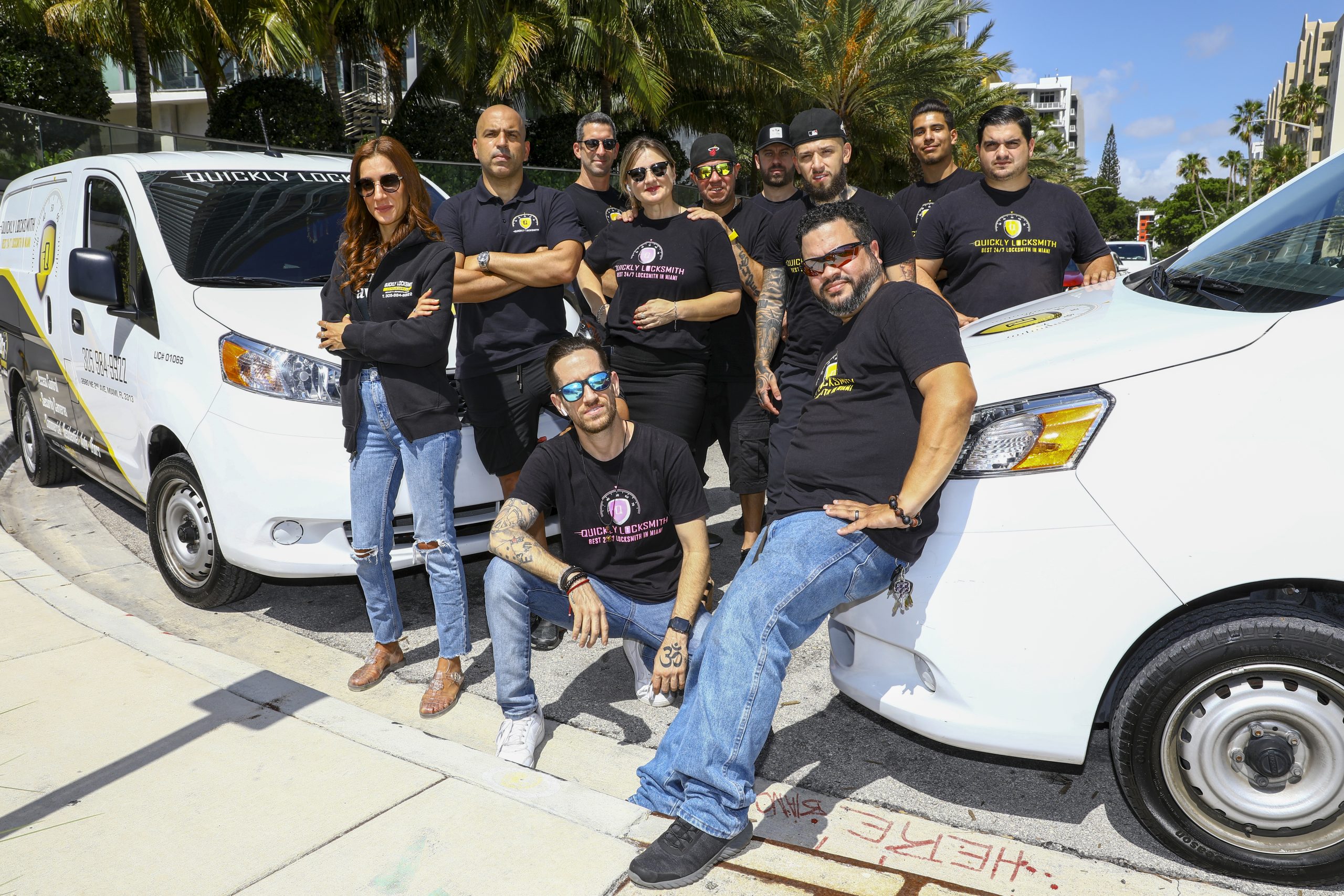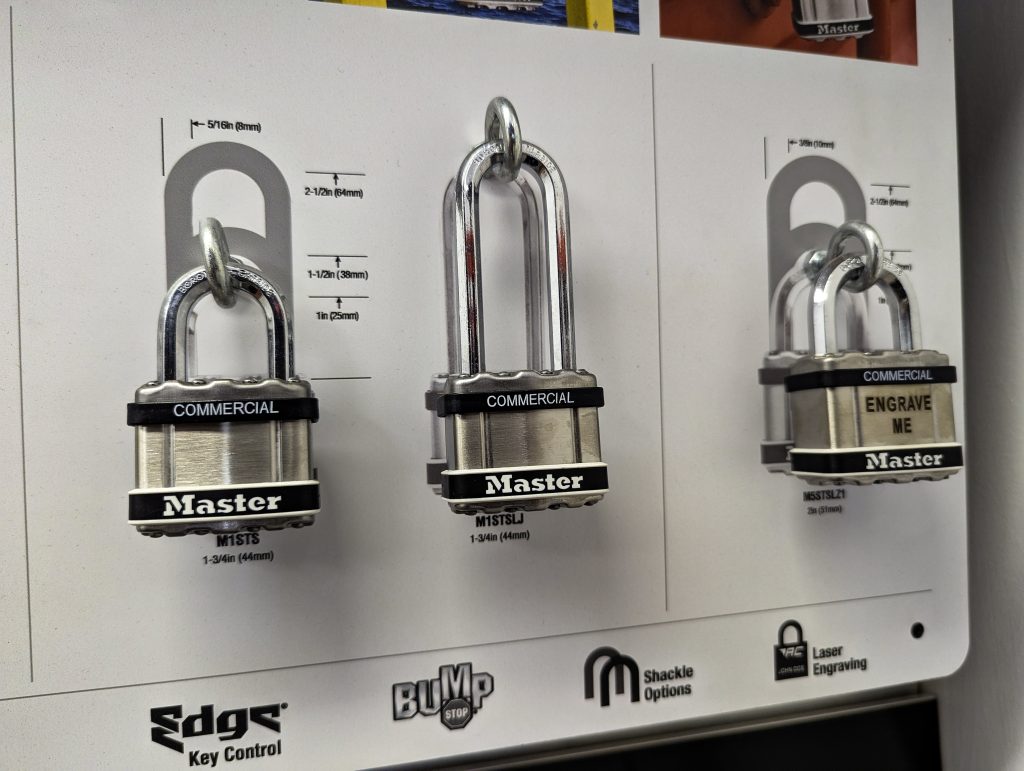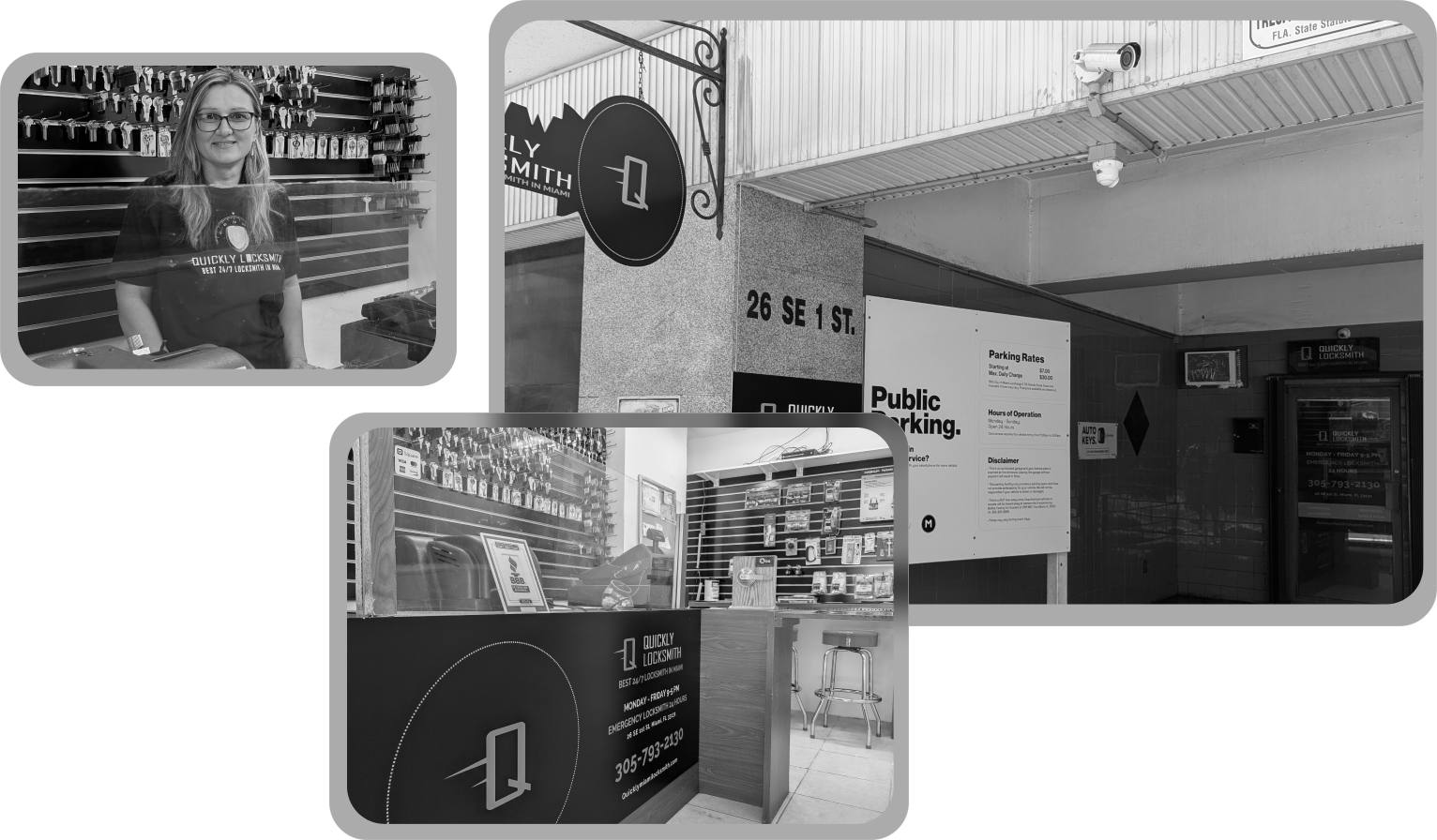
After almost 19 years serving Miami’s diverse communities through Quickly Locksmith Miami, I’ve witnessed firsthand how our tropical environment creates extraordinary challenges for locks, doors, and security systems. From Hurricane Andrew’s devastating impact in 1992 to more recent storms like Irma, each weather event teaches new lessons about securing Miami properties.
Miami’s combination of salt air, high humidity, powerful storms, and flooding creates perfect conditions for security failures. A lock that might last 20 years in a drier climate often requires replacement within 3-5 years here. What works perfectly elsewhere usually fails catastrophically here, precisely when protection is needed most.
“After seeing thousands of lock failures following hurricanes, I’ve developed a simple maintenance calendar that saves my clients thousands in emergency repairs:
This quarterly schedule has proven to extend lock life by 200-300% in Miami’s coastal environment. Even the highest quality locks need regular maintenance in our climate.”
Hurricane Andrew fundamentally changed Miami’s approach to security. The storm’s 165+ mph winds exposed critical weaknesses in standard door and locking systems:
| Security Component | Common Failures | Post-Andrew Changes |
|---|---|---|
| Exterior Doors | Complete door failure | Impact-rated door requirements |
| Lock Cylinders | Salt contamination renders locks inoperable | Corrosion-resistant materials |
| Key Systems | The entire master key system was lost in building damage | Redundant key system management |
| Strike Plates | Tearing from door frames | Reinforced strike plate installation standards |
Andrew led directly to Miami-Dade’s strengthened building codes, revolutionizing door and lock security requirements. Under these regulations, doors must withstand repeated impacts from a 9-pound 2×4 traveling at 34 mph – a standard that required completely rethinking door and frame construction. Lock systems had to be redesigned to maintain functionality even under extreme pressure from hurricane-force winds.
For locksmith professionals, Andrew created an entirely new category of work: hurricane-compliant security upgrades. Property owners across Miami suddenly needed to replace or substantially upgrade their doors, frames, and locking hardware to meet new safety standards.
Hurricane Wilma revealed new vulnerabilities, particularly in electronic security systems:
Wilma knocked out power to over 3.2 million customers in South Florida, some for more than two weeks. During this period, we responded to hundreds of emergency calls related to failed electronic access systems. The most common issues included:
These failures led us to develop new installation protocols for electronic security systems in Miami. We began installing control panels in waterproof NEMA-rated enclosures, using marine-grade connectors for all wiring, and implementing redundant power systems with solar charging capabilities.
By 2017, Miami had adopted more sophisticated security technology, yet Irma exposed new weaknesses:
| System Type | Failure Point | Solution Implemented |
|---|---|---|
| Smart Locks | Network connectivity disruption | Offline operation capabilities |
| Electronic Access Control | Control panel water intrusion | Weather-sealed enclosures |
| Key Fob Systems | Signal interference from debris | Enhanced signal protection |
| Biometric Readers | Humidity-related malfunction | Multispectral imaging technology |
Irma represented the first major hurricane to test Miami’s newer generation of “smart” security systems. Our emergency response teams documented several critical vulnerabilities:
Smart Lock Failures: Many internet-connected smart locks became inaccessible when both power and cellular networks failed. Homeowners who relied exclusively on app access found themselves unable to enter their properties.
Cloud-Based System Disruptions: Properties using cloud-based access management systems experienced credential synchronization problems during network outages. When connections were restored, outdated credentials sometimes created security vulnerabilities.
Battery Drainage Issues: The increased power consumption of smart security devices during cellular network fluctuations led to unexpected battery failures. Standard backup battery calculations proved inadequate in these conditions.
“One of the most valuable lessons from thousands of post-hurricane lockouts: emergency key storage matters. Keep a waterproof emergency kit including:
Store this kit in a location that will remain accessible even during evacuation situations. For businesses, I recommend multiple authorized employees keep copies at their residences in different areas of Miami to ensure at least one remains accessible regardless of the storm path.”
Miami’s proximity to the ocean creates a uniquely corrosive environment for locks and door hardware:
| Metal Type | Corrosion Rate | Common Lock Applications |
|---|---|---|
| Standard Steel | Severe (6-12 months) | Strike plates, internal springs |
| Brass | Moderate (1-3 years) | Key cylinders, decorative hardware |
| Aluminum | Moderate (2-4 years) | Door closers, frame components |
| Stainless Steel (316 grade) | Low (5+ years) | Marine-grade exterior hardware |
| Zinc | High (8-18 months) | Economy lock internal components |
The corrosion process is accelerated by:
One of the most insidious forms of lock failure comes from galvanic corrosion – the electrochemical process that occurs when dissimilar metals come into contact in the presence of an electrolyte (like salt water or humid air). Many standard lock assemblies contain multiple metal types, creating perfect conditions for galvanic corrosion.
Common galvanic pairs in door hardware include:
The more noble metal remains relatively protected while the less noble metal corrodes rapidly. This often leads to lock failures that appear mysterious to property owners unfamiliar with this chemical process.
Different areas of Miami face unique security vulnerabilities during severe weather:
Properties along Miami’s coastline face the most severe conditions, requiring specialized security approaches:
Solution: Marine-Grade Security Components
On Miami Beach, we’ve documented lock failure rates up to 300% higher than similar installations just 5 miles inland. In 2018, we conducted a study of 50 beachfront condominiums on Collins Avenue, finding that standard exterior lock hardware lasted an average of just 14 months before requiring replacement, compared to 45 months for similar installations in Coral Gables.
Miami’s signature high-rises face different challenges:
Solution: Pressure-Rated Security Systems
The unique challenges include the “stack effect” – the vertical air movement created by temperature differentials between the building interior and exterior. During hurricanes, this effect can create substantial pressure that affects door operation and lock engagement.
In Brickell’s tallest buildings, we’ve documented pressure differentials exceeding 0.5 psi during strong storms – enough to prevent standard door closers from functioning and causing misalignment in precision lock components.
Miami’s historic properties present unique preservation challenges:
Solution: Preservation-Conscious Security Upgrades
In Coral Gables, we’ve developed techniques for installing hurricane-compliant security systems while preserving original Mediterranean Revival hardware, including:
Miami’s suburban neighborhoods face their weather-related security challenges:
Solution: Comprehensive Security Integration
Our suburban installations focus on creating self-sufficient security systems that can operate independently for extended periods without external power or communication, including solar charging capabilities, local alarm monitoring, and mechanical backup systems.
The door itself is often the weakest security point during severe weather:
| Component | Weather Vulnerability | Hurricane-Ready Solution |
|---|---|---|
| Hinges | Pull-out during pressure changes | Heavy-duty security hinges with 3″ screws |
| Door Frame | Separation from the wall structure | Reinforced frame anchoring |
| Lock Strike Plate | Tearing from frame | Steel security plates with frame reinforcement |
| Threshold | Water infiltration point | Integrated water barriers and drainage channels |
| Weatherstripping | Degradation from UV exposure | Marine-grade seals with UV protection |
The material composition of exterior doors significantly impacts their weather resistance and security capability:
Wood Doors Traditional wood doors present several challenges in Miami’s hurricane-prone environment:
Fiberglass Doors Fiberglass entry doors offer improved weather resistance:
Metal Doors: Steel and aluminum doors provide superior structural integrity, but present different challenges:
“Here’s something many homeowners don’t realize: the most common point of failure in hurricane conditions isn’t the lock itself—it’s the door frame. I always tell clients that investing in a high-security lock without reinforcing the frame is like putting an expensive padlock on a cardboard box.
When upgrading your security, ensure your contractor installs strike plate screws that extend at least 3 inches into the structural framing (not just the door jamb). This simple modification costs about $15 in materials but can increase force resistance by 500%. I’ve seen countless break-ins where the lock remained intact, but the frame splintered under pressure.”
Standard locks often fail during and after hurricanes due to:
Mechanical Locks Modern hurricane-resistant locks incorporate:
Electronic Locks Hurricane-ready electronic locks feature:
Multi-Point Locking Systems One of the most effective hurricane-resistant lock technologies engages the door at several points around its perimeter, providing:
| Security Metric | Standard Single-Point | Multi-Point System |
|---|---|---|
| Force Resistance | 1,500-2,500 lbs | 4,500-9,000+ lbs |
| Weather Sealing | Moderate | Excellent |
| Hurricane Rating | Limited | Category 5 capable |
| Wind Load Capacity | 110-130 mph | 150-170+ mph |
| Installation Cost | $250-400 | $800-1,500 |
| Lifespan in Miami | 3-5 years | 7-10+ years |
“Living near the ocean creates invisible salt deposits on your locks that accelerate corrosion. Here’s my proven technique for extending lock life in coastal areas:
Monthly, use a clean cloth dampened with distilled water (never tap water, which contains additional minerals) to wipe down all exterior locks and hardware. Follow with a clean, dry cloth. Then apply a marine-grade protectant like Boeshield T-9 (not WD-40, which can attract dust and debris).
This 5-minute process can extend the life of your hardware by years, saving hundreds in replacement costs. For clients within three blocks of the ocean, I recommend doing this twice monthly during hurricane season.”

One often overlooked aspect of hurricane preparedness is post-storm access management:
The importance of proper key management became evident after Hurricane Irma, when many Miami businesses discovered their emergency key sets had deteriorated in storage or were completely inaccessible.
Our hurricane-ready key management protocols include:
Modern electronic access systems rely heavily on network connectivity and power stability – both of which are compromised during hurricanes. Our hurricane-resistant credential management includes:
| Climate Factor | Projected Change | Security Implications |
|---|---|---|
| Sea Level Rise | 8-12″ by 2035 | Increased flooding risk for ground-floor security |
| Storm Intensity | 5-10% stronger hurricanes | Higher impact ratings are needed for components |
| Storm Surge | 15-20% higher | Elevated waterproofing standards required |
| Recovery Timeline | 25-40% longer utility disruptions | Extended backup power requirements |
According to projections from NOAA and the Southeast Florida Regional Climate Change Compact, Miami’s security needs will continue to evolve as our climate changes:
Rising Sea Levels and Security Planning. With sea levels projected to rise 8-12 inches by 2035, ground-floor security systems in coastal and low-lying areas face increased flood risk. Our adaptive approaches include:
Increasing Storm Intensity Climate models project hurricanes may become 5-10% more intense in the coming decades. This requires:
Based on our experience through multiple hurricane seasons, we’ve developed specialized services for Miami properties:
Our comprehensive evaluation includes:
This assessment follows a 35-point inspection protocol developed over years of hurricane response experience.
Tailored solutions for hurricane preparation:
When severe weather affects your security:
Q: How often should locks be replaced in Miami’s climate? A: Standard exterior locks typically need replacement every 3-5 years in Miami. Coastal properties may require replacement every 2-3 years. With proper hurricane-grade hardware and regular maintenance, replacement intervals can extend to 7-10 years.
Q: What’s the difference between “weather-resistant” and “hurricane-proof” locks? A: “Weather-resistant” locks offer basic protection against normal rain and humidity but aren’t designed for hurricane conditions. True hurricane-resistant locks feature marine-grade stainless steel components, sealed internal mechanisms, multiple-point engagement, and reinforced mounting systems. Standard weather-resistant locks often fail during hurricane conditions due to water intrusion and pressure changes.
Q: Can historic doors be made hurricane-resistant without replacing them? A: Yes, most historic doors can be reinforced while preserving their character through custom reinforcement plates, period-appropriate hurricane hardware, concealed multi-point locking systems, and frame reinforcement that preserves historic appearance.
Q: How do multi-point locks compare to standard deadbolts for hurricane protection? A: Multi-point locking systems provide significantly better hurricane protection by engaging the door at multiple points around its perimeter, distributing wind pressure across the entire door frame, and maintaining weathertight seals during pressure changes. While a quality deadbolt costs $150-300 installed, multi-point systems range from $800-1,500 but offer dramatically improved hurricane performance.
Q: How long will electronic locks function during power outages? A: Standard electronic locks typically provide 12-24 hours of operation on battery backup. Our hurricane-ready installations include extended capacity battery systems (72+ hours), solar trickle charging options, power management systems, and mechanical override capabilities.
Q: How does flooding affect electronic security systems? A: Flood exposure typically causes catastrophic failure in standard electronic security components through circuit board corrosion, short circuits, connector deterioration, and power supply component failure. For flood-prone areas, we recommend elevated mounting positions, NEMA-rated waterproof enclosures, sealed connectors, and modular system design.
Q: What’s the average cost to upgrade a standard entry door to hurricane-resistant? A: Converting a standard entry door to hurricane-resistant typically costs $500-800 for basic hardware upgrades, $1,200-1,800 for comprehensive upgrades including reinforcement, or $2,500-4,000 for complete door replacement with a hurricane-rated system.
Miami’s weather presents unique challenges for locks, doors, and security systems, but with proper preparation and specialized components, these challenges can be overcome. At Quickly Locksmith Miami, we’ve spent 18 years developing effective solutions for our city’s specific needs.
As climate conditions change and new technologies emerge, we continue to pioneer solutions that protect Miami properties through whatever weather challenges come our way. Whether you’re securing a waterfront home in Key Biscayne, a high-rise condo in Brickell, or a historic property in Coral Gables, hurricane-ready security is no longer optional in Miami—it’s essential.
For personalized advice on weather-proofing your security systems, visit us at our Midtown location (2680 NE 2nd Ave) or our Downtown shop (26 SE 1st St). We’re here to help Miami stay secure through storm season and beyond.
You can contact us by phone call or email 24/7!!
As we look toward the future of security in Miami, several trends are becoming increasingly important:
Integrated Climate Resilience Planning Security must be considered alongside climate adaptation, including:
Advanced Material Applications: New materials specifically for hurricane environments include:
Predictive Maintenance Systems Modern data analytics allow us to predict failures before they occur:
The security challenges posed by Miami’s unique environment continue to evolve, but so do our solutions. By staying at the forefront of both traditional locksmithing craft and modern security technology, we remain committed to protecting Miami’s properties regardless of what weather comes our way.
Words of Trust: Our valued customers share their experiences with our services. Discover how we've earned their trust and satisfaction. Join our community today! Our average customer rating is 4.6 / 5 based on 704 reviews.


I was in a jam with a broken lock, and these locksmiths came to my rescue! Fast, reliable, and courteous service.
I highly recommend them for any locksmith needs. A+ service!


I needed new locks installed in my home, and this locksmith company exceeded my expectations. Professional, efficient, and reasonably priced. I feel safer now. Thank you!


Locked out of my car in the middle of the night, but these locksmiths arrived quickly and got me back in. Their 24/7 service saved me! Top-notch service with a friendly attitude.
We serve all of Miami Dade-County surrounding areas

We truly care about your security. Keeping you, your family and your most valuable possessions safe is why we are in business. However, whenever you are looking to hire a residential locksmith service, here are some valuable tips to make the right choice.
Find The Nearest Locksmith To Your Location in Miami FL



Midtown Miami Location: 2680 NE 2nd Ave, Miami, FL 33137.